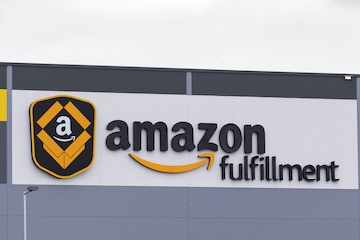For Amazon sellers, the Covid-19 situation is changing every day. As I write this, Fulfillment by Amazon is informing sellers to expect delays in the replenishment of non-essential items.
Amazon has shut down nearly 5,000 sellers for price-gouging — overcharging for personal protective equipment, cleaning products, sanitizer, and more.
The most vulnerable sellers are arbitragers, who mainly buy from brick-and-mortar stores and sell on Amazon. They have now lost control of their supply chain since most physical stores have closed. Some arbitragers buy and sell entirely on the marketplace. But they, too, no longer control replenishment and cost.
For Amazon sellers, the Covid-19 situation is changing every day.
Supply Chain
This crisis is unlike anything I’ve seen 30-plus years of retailing and direct-to-consumer selling. The current climate is not similar to holidays or natural disasters such as hurricanes, tornadoes, or earthquakes. The Covid-19 situation is without equal. For holidays, manufacturers and retailers have time to work together to build up inventory. Planning occurs over months using historical data. And natural disasters are finite and contained in a region.
Amazon, Walmart.com, and brick-and-mortar stores are all depleted of inventory. For the next 30 days, FBA will focus on restocking essential items. Also, customer shipments are limited to essentials — even if the product is in stock and Prime.
Manufacturers are struggling to replenish the supply chain. They need raw materials. Otherwise they will struggle to fill the demand for, likely, several months.
All sellers on Amazon have been affected, not just food and household goods. There are shortages in the fitness equipment category because consumers are creating home gyms. Electronics are in demand as parents try to keep their kids busy. Office equipment is needed as people transition to work from home.
Lessons for Sellers
The supply chain is critical for both retailers and brands. Both require control over their product flow and cost structure. Building a brand with a localized supply chain insulates sellers to an extent. Brands in high-value categories control listings, price points, and messaging.
Regardless, going forward the key for all sellers is to control the supply chain. It’s critical for protecting revenue as Covid-19 has so painfully demonstrated. And a significant part of that supply chain should come from domestic distributors or manufacturers.
…going forward, the key for all sellers is to control the supply chain.
Overseas production, for many categories, is risky. Resupply is so long that it’s difficult to react to changes in consumer buying patterns. Domestic manufacturing allows you to stay in frequent contact with suppliers, which could enable you, the seller, to seize opportunities rapidly.
My consulting firm works with a personal care brand that creates skin creams, sprays, and gels. The company’s domestic manufacturer offered to provide a sanitizing gel under my client’s brand. Since it was already producing this item for others, the manufacturer could create the product quickly. The brand needed only to create a label. Within three weeks, the brand had a new product that is highly relevant to the current climate.
To its credit, my client donated the sanitizing gel to businesses, hospitals, and schools. A secondary benefit is free brand advertising, which will help when the crisis passes. If the source of the gel were overseas, my client would never have been able to execute so timely.
The Aftermath
Covid-19 has exposed flaws in the supply chain. We can see which businesses and systems had contingency plans. Regardless, many companies are suffering. Some won’t recover. We can’t predict the outcome, but it’s clear that brands on Amazon have more control over supply and thus can more easily adapt.




